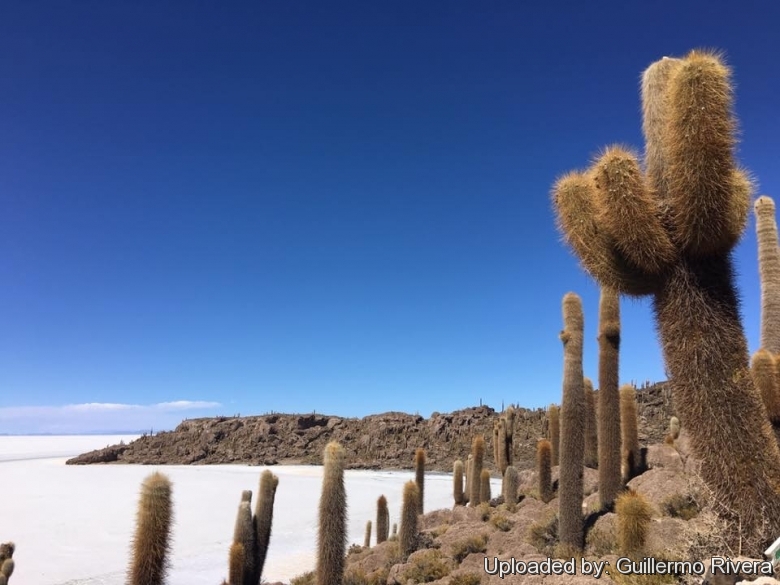
Echinopsis atacamensis subs. pasacana Photo by: Guillermo Rivera
Isla del Pescado or Incahuasi island, in the Salar de Uyuni, Potosi, Bolivia. Magical place.
Origin and Habitat: Argentina and Bolivia,
Altitude: 2000 to 4000 m above sea level.
Habitat: It grows on step slopes in association with shrub species and is often the dominant plant at the margins of the Argentine Puna.
Ecology: The plant has narrow ecological requirements, and cannot tolerate hight humidity, extreme heat or enduring frost. They appears to be intollerant of temperatures below -9° C or in excess of 30° C. Plants at higher altitude show dense coats of white fluff as protection from frost and sunburn. The climate is arid, rainfall 150 ± 70 mm per annum mainly from spring to autumn. Mean maximum and minimum temperatures winter are 30 °C and 8 °C, and winter are 27 °C and ?7 °C respectively. Throughout the year, there is a high diurnal thermal amplitude, of over 20 °C. Pollination is done by bees.
Synonyms:
See all synonyms of Echinopsis atacamensis
Common Names include:
ENGLISH: Pasacana Tree Cactus, Pasakana, Pasacana Cactus, Thistle, Candelabra Cactus
SPANISH (Español): Cardón, Cardón Grande, Cavul
Description: Echinopsis atacamensisSN|7374]]SN|7374]] subsp. pasacana is a massive tall tree-like cactus with a strong branched habit that distinguish it from the subsp. atacamensis that is usually unbranched and less tall.
Stem: Columnar, cylindrical, stout, 30-80 cm across that grows very slowly up to 10 m tall in a life span that may stretch more than 300 years. The stem stays for a long time solitary but produces lateral branches and becomes Saguaro-like with age. Larger stems my weight several tons.
Ribs: 20-30 deep.
Areoles: Brown becoming large, round that produce at once a whole spine cluster, but the areoles remain capable of further growth. Many years later new spines may be formed from the upper part of the areoles.
Spines: (30-)40-50(-100) quite variable in different specimen, unequal, hardly distinguishable from radials to central, subulate, rigid to flexible, amber, yellow-brown or dark-brown coloured, the longest up to 30 cm long, but usually less than 10 cm long.
Flowers: Borne on the sides of the stems, rose-white, 10–14 cm long; Tube covered with long blackish hairs.
Blooming period: Spring to summer, flowers open in the evening and last from 18 to 40 hours.
Fruit: Dark green, densely covered with hairs, up to 5 cm long, edible.
Subspecies, varieties, forms and cultivars of plants belonging to the Echinopsis atacamensis group
Notes: Two subspecies of Echinopsis atacamensis are recognized. Subspecies atacamensis
grows on the Chilean side of the Andes, the other found over the cordilleras on the Argentine side and called pasacana. But if the two were growing side by side it would be difficult to say which was which and some authors affirm that they are one and the same. Moreover Echinopsis atacamens is considered by some authors only a higher altitude variant of Echinopsis terscheeckii.
Bibliography: Major references and further lectures
1) Anderson, Edward F. (2001), "The Cactus Family" Pentland, Oregon: Timber Press,
2) Curt Backeberg “Cactus Lexicon” Sterling Publishing Company, Incorporated, 1978
3) Keith Grantham, Paul Klaassen “The plantfinder's guide to cacti & other succulents” Timber Press, 18/May/1999
4) Britton & Rose "The Cactaceae" 4: 273, 1923
5) Hiroshi Hirao “Colour encyclopaedia of cacti” Japan 1979 (Japanese language and script)
6) Willy Cullmann, Erich Götz (Dozent Dr.), Gerhard Gröner “The encyclopedia of cacti” Portland, OR: Timber Press, 1986
7) David Hunt, Nigel Taylor “The New Cactus Lexicon” DH Books, 2006
8) Theodore H. Fleming, Alfonso Valiente Banuet “Columnar Cacti and Their Mutualists: Evolution, Ecology, and Conservation” University of Arizona Press, 2002
9) David Yetman “The Great Cacti: Ethnobotany & Biogeography” University of Arizona Press, 2007
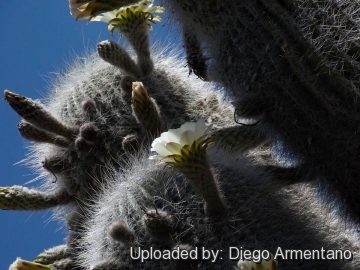 Blooming habit at 3255 metres of altitude. Photo by: Diego Armentano
Blooming habit at 3255 metres of altitude. Photo by: Diego Armentano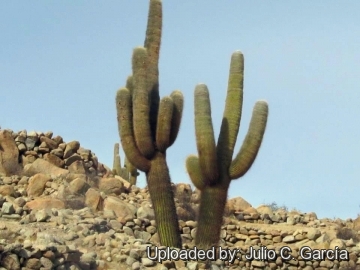 Echinopsis atacamensis subs. pasacana Photo by: Julio C. García
Echinopsis atacamensis subs. pasacana Photo by: Julio C. García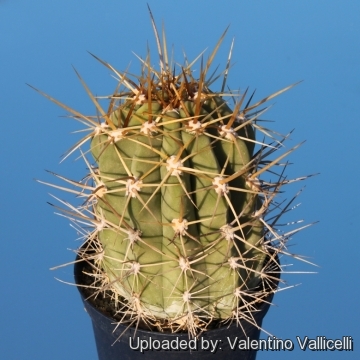 Echinopsis atacamensis subs. pasacana Photo by: Valentino Vallicelli
Echinopsis atacamensis subs. pasacana Photo by: Valentino Vallicelli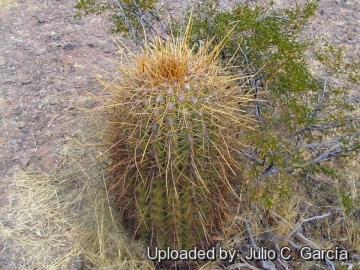 Echinopsis atacamensis subs. pasacana Photo by: Julio C. García
Echinopsis atacamensis subs. pasacana Photo by: Julio C. García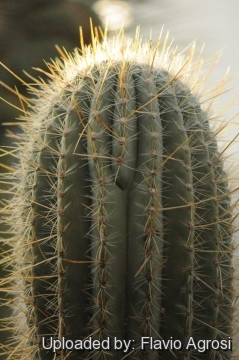 Echinopsis atacamensis subs. pasacana Photo by: Flavio Agrosi
Echinopsis atacamensis subs. pasacana Photo by: Flavio Agrosi Echinopsis atacamensis subs. pasacana Photo by: Diego Armentano
Echinopsis atacamensis subs. pasacana Photo by: Diego Armentano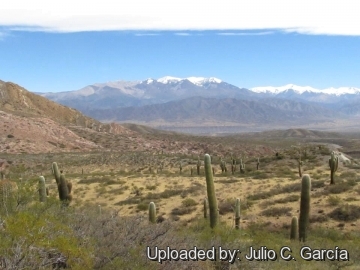 Trichocereus Pasacana "Cardones" cerca de Cachi, Pcia. de Salta. Photo by: Julio C. García
Trichocereus Pasacana "Cardones" cerca de Cachi, Pcia. de Salta. Photo by: Julio C. García Isla del Pescado or Incahuasi island, in the Salar de Uyuni, Potosi, Bolivia Photo by: Diego Armentano
Isla del Pescado or Incahuasi island, in the Salar de Uyuni, Potosi, Bolivia Photo by: Diego ArmentanoCultivation and Propagation: It grow slowly and are moderately cold hardy, but make sure that they are not exposed to severe freezing temperatures, or they may die. They need a well drained soil mix. Water regularly in summer but allow to dry fully before watering again. During the winter months they should be rather kept dry. Since they are big-sized plants, they need plenty of space for their roots. Repotting should be done every other year, or when the plant has outgrown its pot.
Exposure: Light shade when young, full sun later.
Propagation: From stem cuttings (if available) in spring (let them dry till the ends callous well. Then replant them in fresh cactus soil that is ever so slightly moist, and keep it that way till they root) or preferably by seeds. Seeds should be sown in a well-drained soil mix. Surface sowing is the best. Seeds germinate in 14-28 days at 20° C .
Traditional uses: A popular item sold in many regions of the world is the rain stick, made from the dried skeleton of the stem of the cardon, Echinopsis atacamensisSN|7742]]SN|7374]] subsp. pasacana, in northwestern Argentina. The dry stems are harvested in the field, cleaned, and prepared by pushing stout spines through the areolar gaps in the wood. The cylinders of the wood are sealed and filled with various materials, such as volcanic sand or pebbles, that run up and down when the stick is tilted. These are then sold locally and overseas. The trade in rainsticks made from cacti has increased in recent years, giving rise to concern over the impact on the wild populations. Rain sticks are also made from the wood of Echinopsis chiloensisSN|7374]]SN|7742]] or Eulychnia acidaSN|7067]]SN|7067]], in Chile.
Your Photos

by Diego Armentano

by Julio C. García

by Julio C. García





















